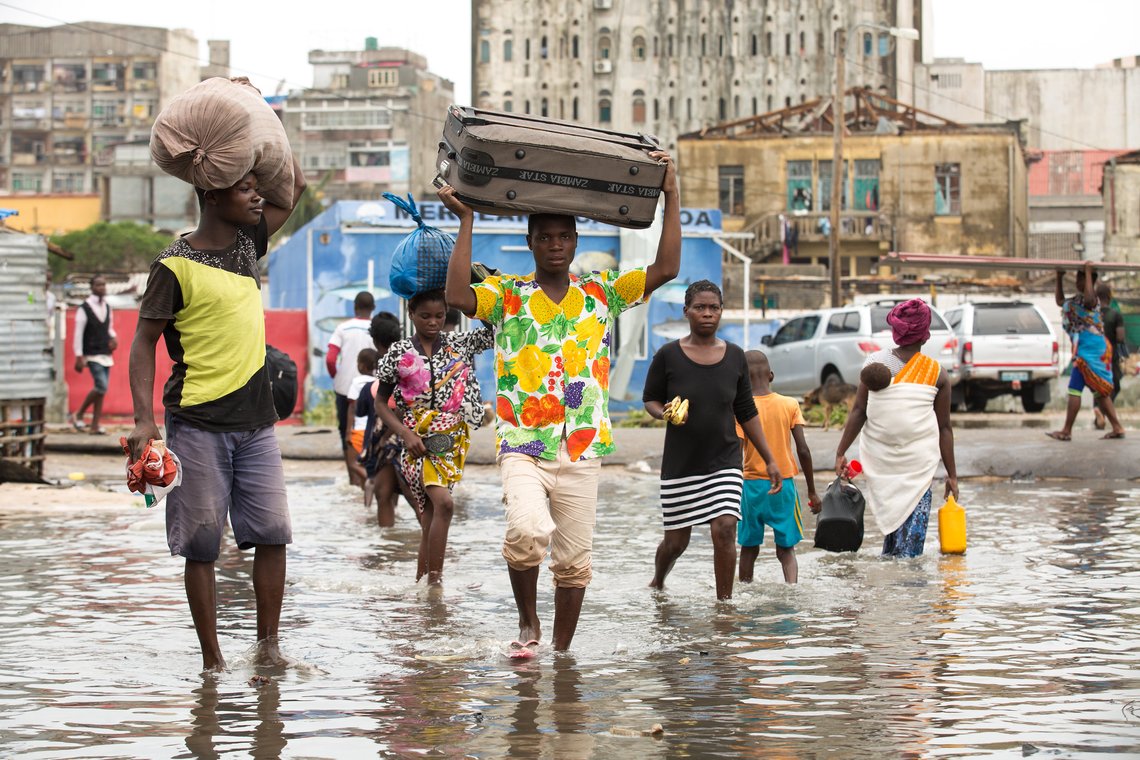Categories
What does the latest climate science mean for anticipatory action?

The recent Intergovernmental Panel on Climate Change (IPCC) climate report, ‘Climate Change 2022: Impacts, Adaptation and Vulnerability’, highlighted that extreme weather events are getting even worse – and faster than we thought. Beyond the impacts of these events, however, the IPCC focused on solutions.
Anticipatory action was one of the solutions most commonly cited in the report. For example, early warning systems were mentioned as a way to adapt to climate change in each of the report’s 18 chapters. As we work out how to deal with our changing climate, this report offers a series of inspiring examples for how to use anticipatory action. But it also leaves us with three tough questions about how to ensure that our investments are ready for a changing climate.
Inspiration
The seven sectoral chapters in the IPCC report offer a diversity of applications for early warning systems, challenging us to think big and broadly. For example, forecasts of heat stress in animal populations have been used for wildlife management and conservation (Ch2), and early warnings have been used to improve fish hatchery operations in the world’s oceans (Ch3). Early warnings for floods have protected human lives (Ch4) and early harvesting based on forecasts of algal blooms have protected human livelihoods (Ch5). Cities have used early warnings for urban preparedness, and there are strong calls for further investment in early warning systems for urban areas (Ch6), while disease early warnings have saved lives (Ch7). The final sectoral chapter (8) concluded that climate-resilient development needs to include appropriate warnings and weather advisories.
Inspirational examples of early warning systems are found across the world. Climate services have been developed to support social protection programmes in Africa (Ch9), while early warnings for floods in Ho Chi Minh City, Viet Nam, complement long-term investments in sewer upgrading and increasing road heights (Ch10). Australia has successful early warning systems for heat waves and fires (Ch11); Central America and South America provide examples of early warnings for dengue and epidemic forecasts (Ch12). In Europe, early warning systems have reduced heat-related mortality and flood damage (Ch13), while innovative railroad sensors have provided early warnings of track buckling in North America (Ch14). Small Islands have had success with storm early warnings, and would like to see further investment in wildfires, droughts and other hazards (Ch15).
Three tough questions
In all these cases, however, the existence of an early warning system does not automatically benefit everyone. There are numerous examples of ‘maladaptation’, in which marginalized populations are left behind. Some early warning systems rely on telecommunication networks that do not reach the most vulnerable individuals, for example. As we promote anticipatory action as a way to adapt to climate change, how can we ensure that these solutions benefit marginalized populations?
The IPCC report places a strong emphasis on transformational solutions that fundamentally change our society, noting that small tweaks to everyday life are often not enough to adapt to the large changes we are seeing in our climate. For example, instead of planting the same crop a few days earlier, some regions might need to consider shifting livelihoods altogether.
In the case of anticipatory action, most efforts to date have focused on keeping society the same, rather than engaging with transformation. For example, temporary evacuation programmes send people home after a disaster, helping them to return to their livelihoods exactly as they were beforehand. And early action programmes for drought might feed livestock to help them survive – only to be hit by another failed rainy season in the future. Given that climate change is increasing the risk of floods, drought, storms and heat waves in many places, how can anticipatory action systems support appropriate transformation and climate-resilient development pathways?
Lastly, the IPCC report outlines several unprecedented extreme events that have happened recently; it also highlights the risk of more such events in the future. Early warning systems are often designed based on historical events, but the past is no longer a good predictor of our future. How can we design anticipatory action systems that are ready for unprecedented events?
Our urgent moment
Compared to the IPCC assessment issued in 2014, the projections in this latest report are more dire, and the IPCC’s 2022 policy summary stated – for the first time – that climate change is contributing to humanitarian crises. We have a window of opportunity to scale up thoughtful solutions, as part of wider efforts to establish climate-resilient development pathways. As a community, we must come together to answer these questions as we scale up anticipatory action.
This blog was written by Dr Erin Coughlan de Perez, a lead author of the IPCC Working Group II Assessment Report ‘Climate Change 2022: Impacts, Adaptation and Vulnerability’. The individual chapters can be downloaded from the report’s website.
Erin spoke on this theme during an Anticipation Hub community conversation; you can watch a recording of this here.
For more key messages for the humanitarian sector, see the Climate Centre’s cartoon summary of the IPCC report.
The IPCC Working Group II report was also discussed during the first Climate Science and Humanitarian Dialogue on March 25, read more here.

